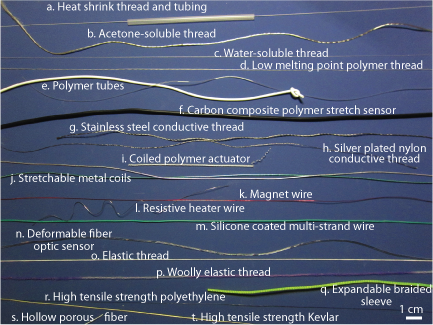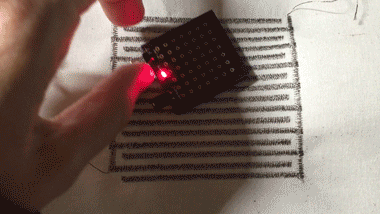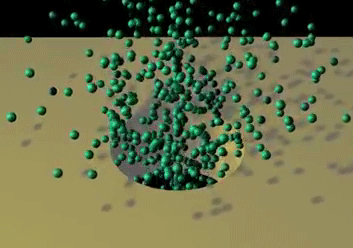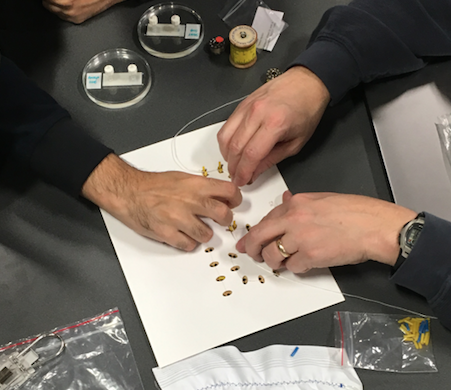Moving water without moving parts
Jaz captured a video of his membrane pump moving water from left to right. The metallized membrane is a disc of about 1 cm diameter sandwiched between the pink layers of plastic, while metal tubes on either side supply an AC electric field. The voltage applied at the red and black clips is similar to what comes out of an electric socket, and the device draws a few milliamps. The video shows a single 10 micron thick membrane driving a slug of deionized water at about 60 microliters per minute. A microliter is 1 cubic millimeter, meaning this flow rate is in a good range for pushing fluids in “lab on a chip” analytical applications such as chromatography for identifying proteins. It could also be useful for driving tiny fluidic actuators, especially at hinges where a small volume change could drive a larger mechanical motion. And it would take a little over 8 minutes to adminster your .5 cc flu vaccine at this rate, which would be okay only if you were very patient. To get faster flow rates, you can increase the membrane surface area.
Signs of life in the lab
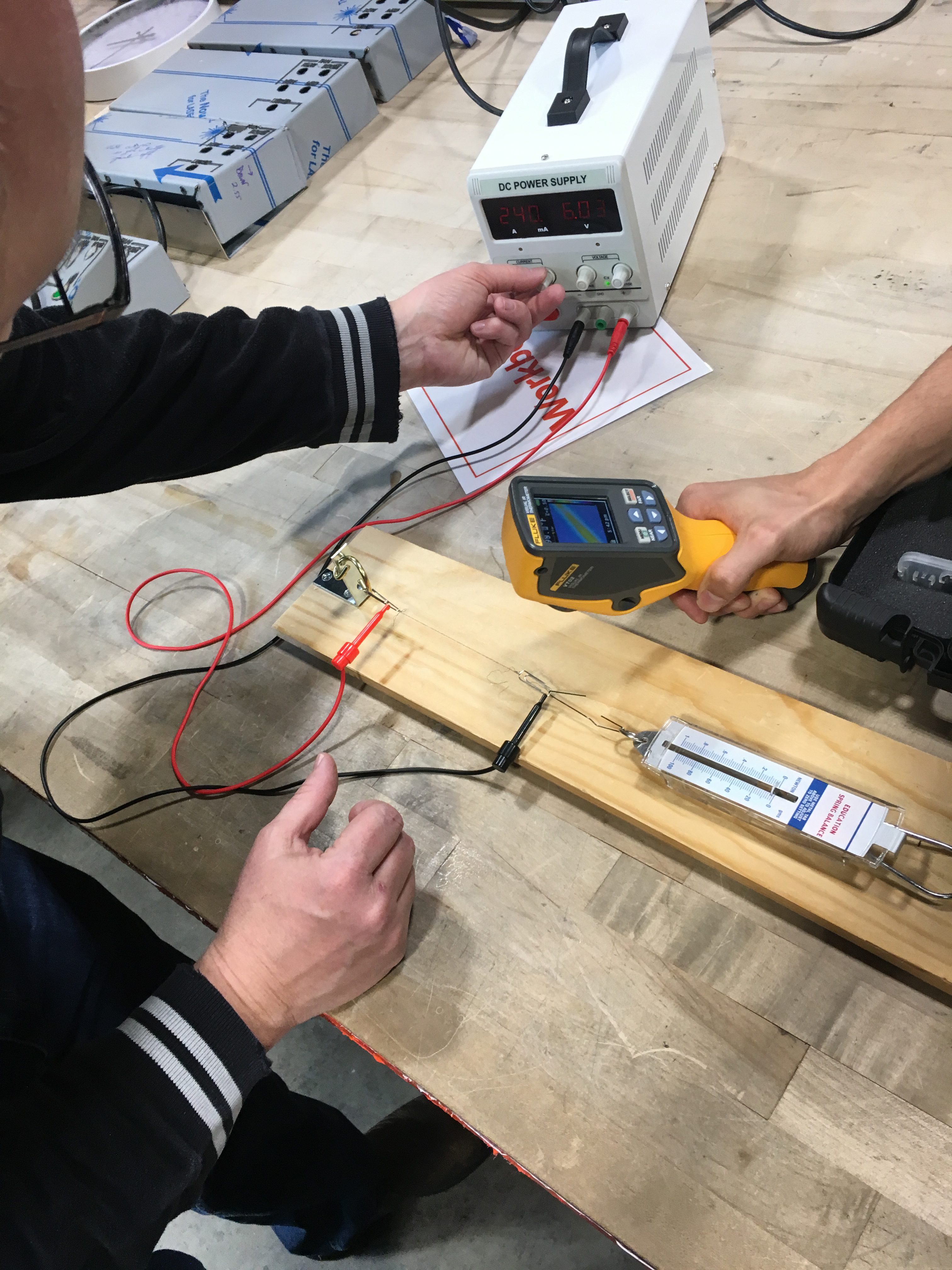 Our projects are about integrating “functional” materials into larger structures, without damaging the material or the structure. Some examples of functions we want the materials to have are exerting forces, absorbing specific wavelengths, or turning a mechanical stress into an electronic signal. That won’t happen if we melted the material during installation (a real danger when sealing gold nanoparticles into a polymer structure) or if the material destroys the structure that holds on to it. Brian needed to make sure his actuators could output useful forces without melting the plastic of a 3D printed robot body. Thanks to our neighbors at FirstBuild, he was able to check on the temperature of the actuators he made using their thermal imaging camera. After that, he went ahead and made sure the grad students were in good shape.
Our projects are about integrating “functional” materials into larger structures, without damaging the material or the structure. Some examples of functions we want the materials to have are exerting forces, absorbing specific wavelengths, or turning a mechanical stress into an electronic signal. That won’t happen if we melted the material during installation (a real danger when sealing gold nanoparticles into a polymer structure) or if the material destroys the structure that holds on to it. Brian needed to make sure his actuators could output useful forces without melting the plastic of a 3D printed robot body. Thanks to our neighbors at FirstBuild, he was able to check on the temperature of the actuators he made using their thermal imaging camera. After that, he went ahead and made sure the grad students were in good shape.
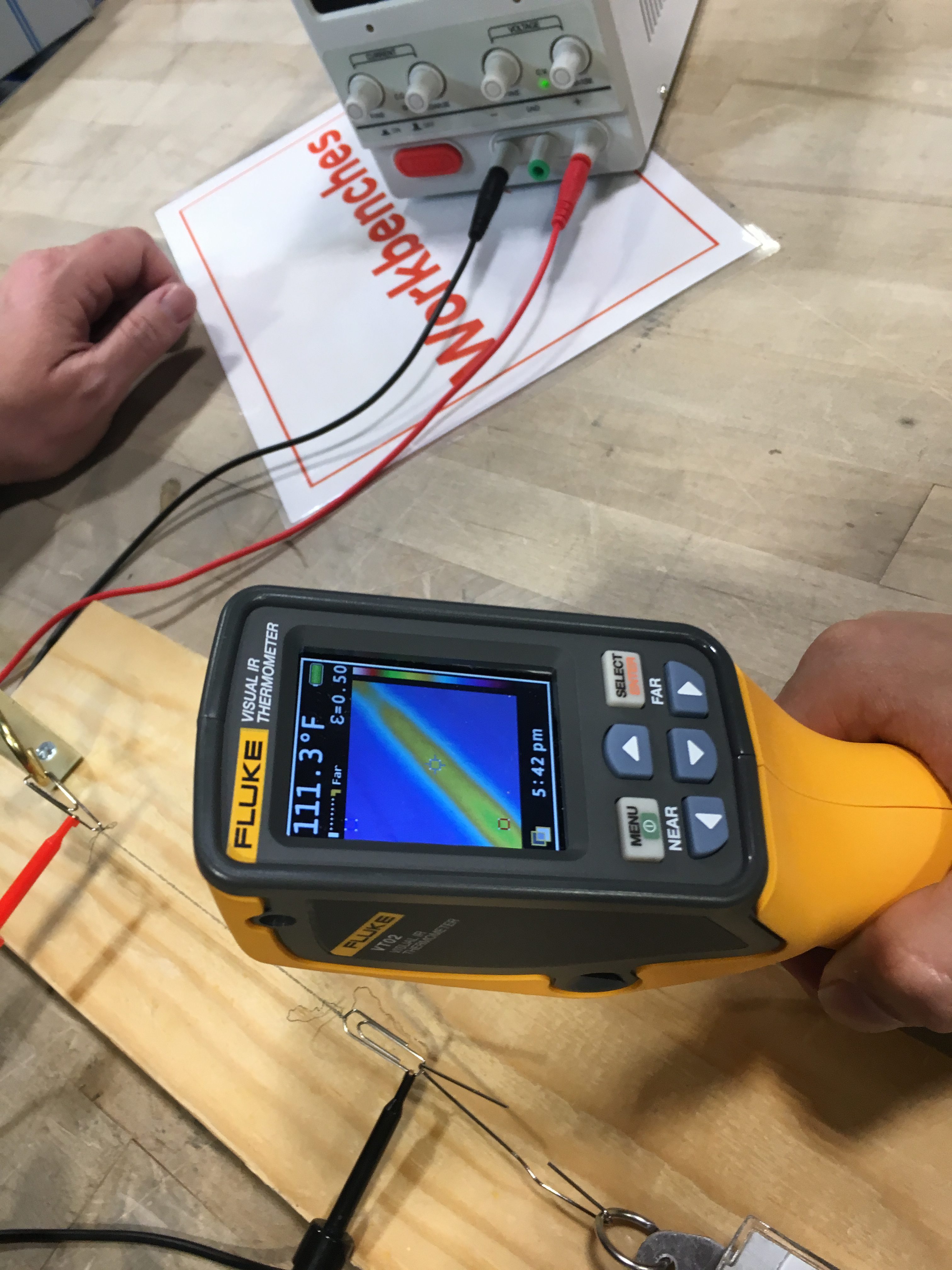

Bring it
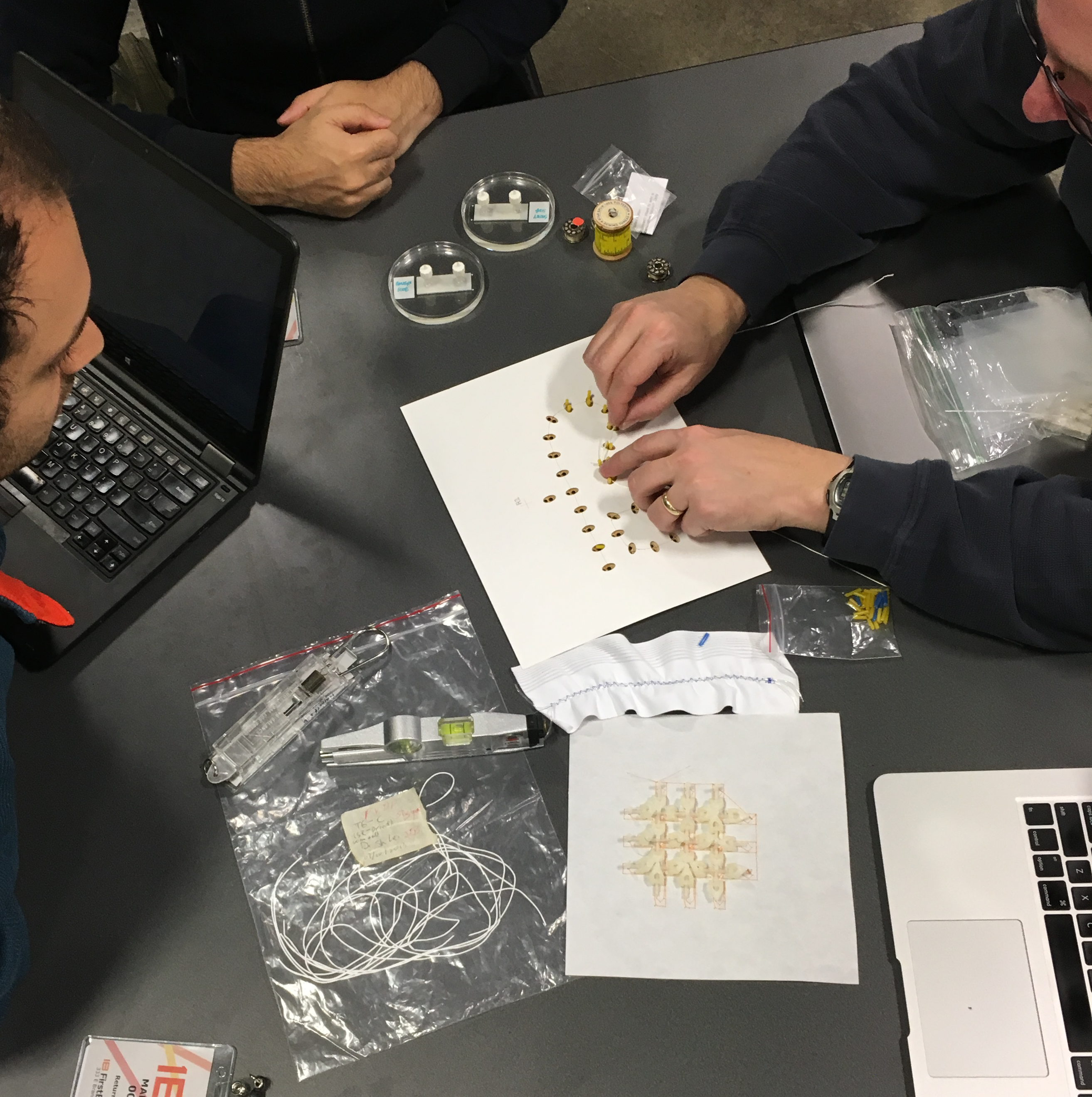
Group meeting nearly overwhelmed this table at FirstBuild. Jaz brought new data and Shaf had a couple of new microfluidic devices; both projects involve membranes. Brian demoed his system for routing fiber actuators using a laser-cut template. Added to the pile: hollow fiber membranes from our collaborator at UK and a mechanism designed to work with an array of machine-installed high tensile strength fibers. Materials like these often can’t be processed directly by the key low-cost rapid prototyping methods of laser-cutting or 3D printing because of their thermal properties. Structures like nanopores are lost when they’re melted, while other materials (like metals) won’t even flow at desktop 3D printer temperatures. We’re working to make sure materials with useful micro and nanostructures–including gold nanoparticles, nanoporous membranes and micro/nano structured fibers with electrical and optical functions–can get out of the lab and into the rapid prototyping ecosystem.
A Lot Of Strands
We continue to explore how fibers can get into the computer-controlled fabrication process. 3D printing takes the spotlight, but each year about 10x more sewing machines are sold in the US than desktop 3D printers worldwide. If we can combine some of their capabilities with 3D printing, a lot of exciting materials can join the party – whether or not you have industrial equipment. The picture below shows 20 kinds of engineered threads, fibers and wires that can be directly sewn (all the ones with “thread” in the name) or captured under sewn threads (generally the thicker, softer fibers and the wires). Thermally actuated threads that can’t tolerate high temperatures, or materials like flame-smoothed fishing line that require high temperature processing, are challenging to 3D print using the most popular “hot glue” style printers. Structured fibers like braids are much faster to build with textile machinery than 3D printing, while hollow porous fibers for water filtration and the coiled polymer actuator in the video above rely on chemistry or external forces that aren’t yet available at the desktop 3D printer nozzle.
